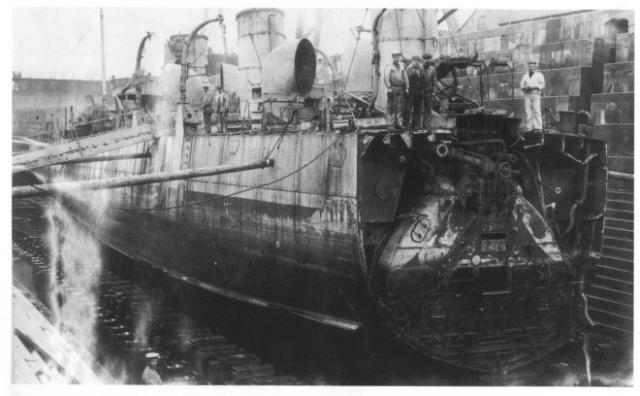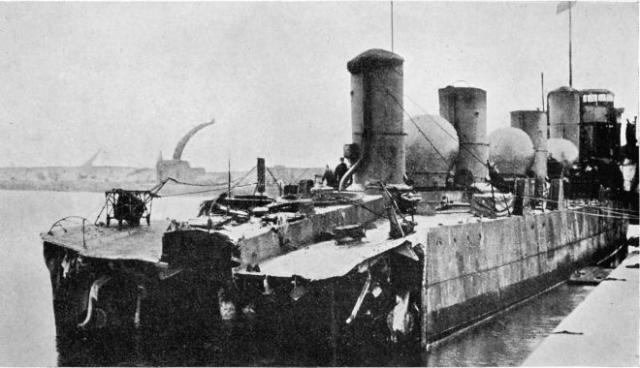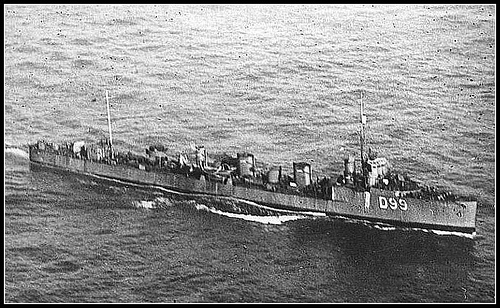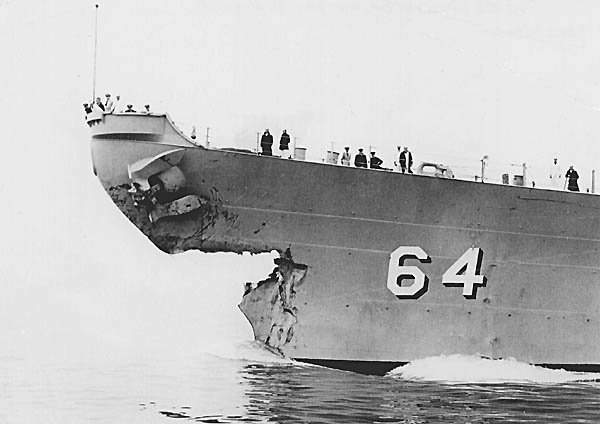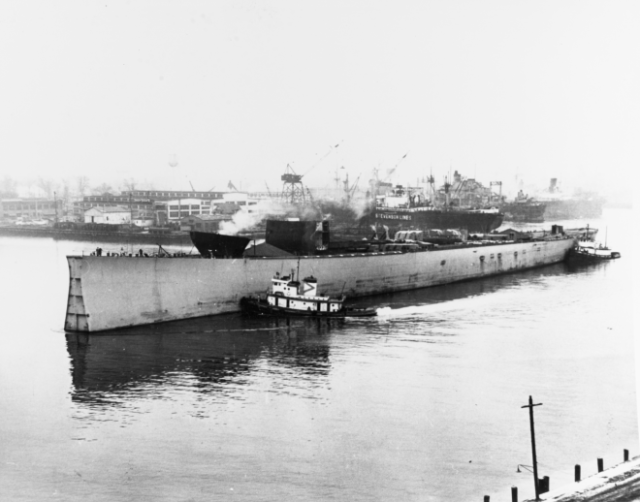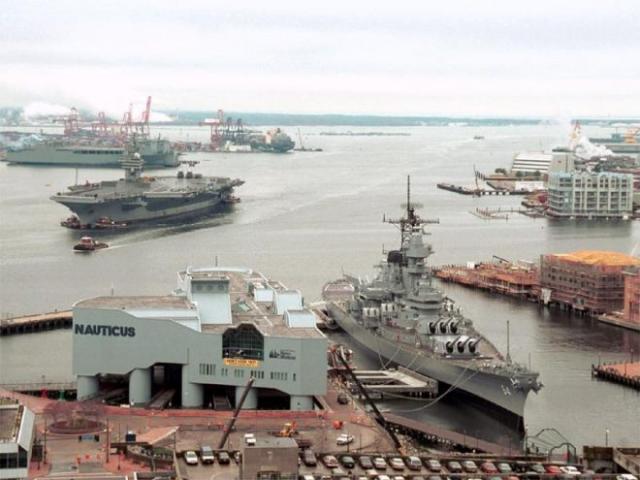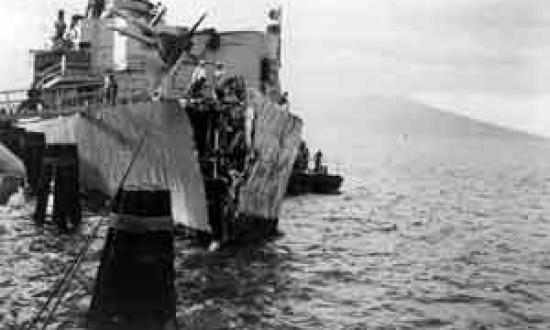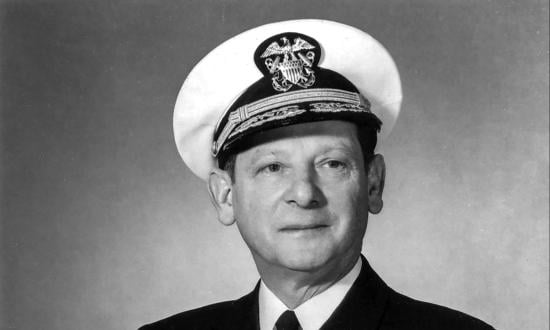When the Royal Navy commissioned the 13th Tribal-class destroyer in on 7 June 1917, it unleashed a floating Frankenstein’s monster. HMS Zubian was actually stitched together from the best parts of the class’s 10th and 12th destroyers after both had suffered heavy damage while serving as part of the Dover Patrol to prevent German vessels from entering the English Channel.
(Courtesy of the Author)
HMS Nubian was torpedoed during the Battle of Dover Straight in October 1916 but had remained mostly intact and suffered no casualties. As she was being towed back to port, heavy winds caused her to breakaway and run aground on the Kent coast of England. This incident was even more costly than the German attack. The bow completely broke off the ship and more than a dozen crew were lost.
(Courtesy of the Author)
After participating in minelaying operations earlier in the year, HMS Zulu became a victim of one of the insidious underwater explosives in November 1916 when she struck a mine laid by a German U-boat. Three sailors were killed and the stern was shorn from the ship. The Zulu managed to make it to Calais with the help of a French destroyer before being towed back to England.
(Courtesy of the Author)
The Admiralty decided it could not afford to scrap the badly disfigured destroyers, so the Nubian and Zulu were taken to the Chatham Dockyard where engineers were ordered to perform an operation of sorts to create a new life from the wrecks. Just as siblings are the most compatible matches for organ transplants, the sister ships were similar enough that they could exchange vital parts. The bow of the Zulu was grafted to the midsection and stern of the Nubian to create a new destroyer. Quite fittingly, the composite ship was christened with the portmanteau name HMS Zubian.
A report published in a 1919 issue of Proceedings magazine lauded this innovative feat of engineering, stating that it was “one of the most singular examples of ‘reconstruction’ in the history of the navy.”
The Zubian proved to be more than just a novel experiment. On 4 February 1918, she spotted a minelaying U-boat in the Dover Strait and gave chase. After failing to ram the sub, she dropped depth charges that did their job and doomed the U-boat. Conjoined as the "Frankenship" Zubian, the Zulu and Nubian had teamed up to get revenge against the Germans.
Alas, the life of the Zubian was short. Like all the other ships of the Tribal-class that survived the war, she was sold and broken up for scrap a year after the 1918 Armistice.
(Courtesy of the Author)
The U.S. Navy created a similar "Frankenship" when the USS Wisconsin (BB-64) lost a sizable chunk of her bow after a collision with the USS Eaton (DD-510) off the Virginia Capes in 1956. A replacement bow was taken from the incomplete USS Kentucky (BB-66) and welded onto the Wisconsin.
(Courtesy of the Author)
After having her keel laid down in 1942, construction on the Kentucky had progressed slowly because of the Navy shifting priorities away from battleships in favor of carriers. Work was halted in 1950, and the Kentucky was left to languish in a shipyard even thought it was almost 75 percent complete. Proposals to modify her to carry guided missiles were considered but abandoned as being too expensive and impractical. The Kentucky was then cannibalized for parts.
(Courtesy of the Author)
The Kentucky was scrapped in 1958 but part of her continued to serve the Navy as the bow of the Wisconsin until she was decommissioned following Operation Desert Storm in 1991 and placed in the Reserve Fleet. In 2001, the Wisconsin became a museum ship in Norfolk, Virginia, but was kept in a state of readiness in case she was needed for a national emergency. In 2009, the Navy officially relinquished all control of the Wisconsin and transferred her to the city of Norfolk, where she (and part of the Kentucky) can be visited by the public today.




